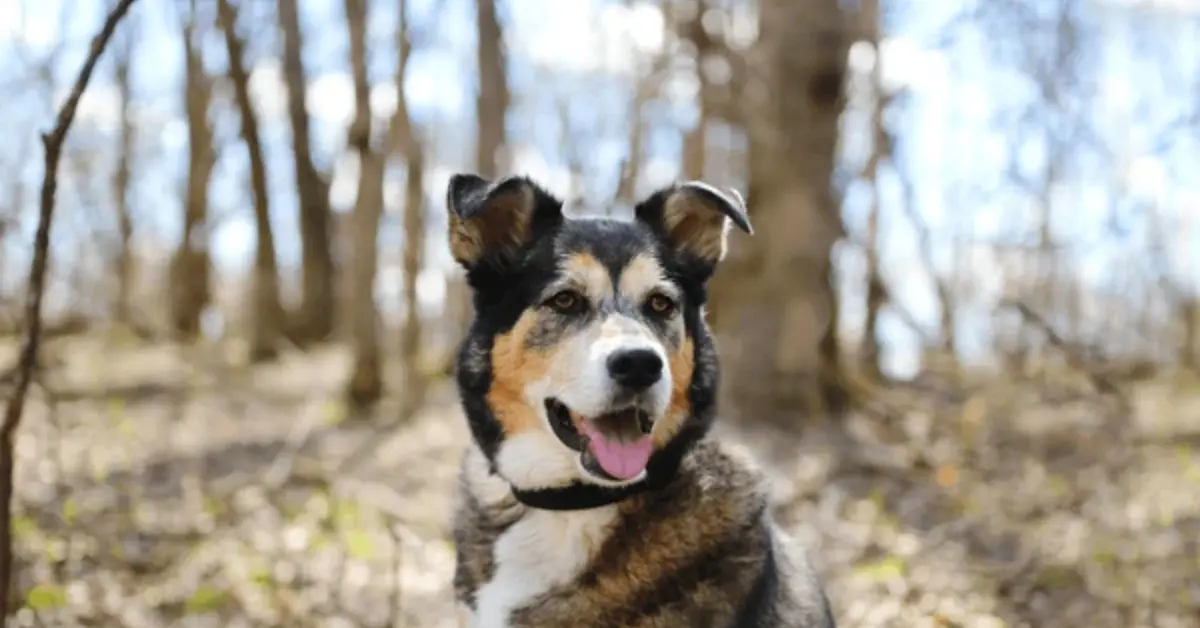
Border Collie German Shepherd Mix: Ultimate Guide
Are you intrigued by the idea of adding a furry friend to your family? Meet the Border Collie German Shepherd mix, affectionately known as the Shollie! These unique hybrid dogs bring together the best of two worlds: the intelligence and agility of the Border Collie, and the loyalty and protective instincts of the German Shepherd.
In this comprehensive guide, we’ll explore everything you need to know about Shollies, from their fascinating origins to their distinctive physical traits, temperament, health considerations, grooming needs, and training requirements. Whether you’re a seasoned dog owner or considering your first canine companion, join us as we embark on a journey to discover the wonderful world of Border Collie German Shepherd mixes and whether they might be the perfect addition to your life.
Origins of the Border Collie German Shepherd Mix
The Border Collie German Shepherd mix is a relatively recent crossbreed, likely originating in the late 20th or early 21st century. While the exact circumstances of their development are not well-documented, it’s believed that breeders sought to combine the herding prowess of the Border Collie with the versatility and protective instincts of the German Shepherd.
The intentional crossing of these two iconic working breeds aimed to create a canine companion that excelled in various roles, including herding, protection, search and rescue, and as loving family pets. The popularity of Shollies has grown steadily in recent years, thanks to their winning combination of intelligence, loyalty, and adaptability.
Physical Characteristics Border Collie German Shepherd Mix
Shollies inherit a blend of physical traits from their Border Collie and German Shepherd parents, resulting in a striking appearance that combines the best of both breeds. These hybrids typically have a medium to large build, characterized by a well-proportioned body, strong limbs, and an alert expression. Standing between 18 to 29 inches tall at the shoulder and weighing anywhere from 45 to 80 pounds, Shollies are robust and athletic dogs capable of impressive feats of agility and endurance.
Their coats exhibit considerable variation in length, texture, and color, reflecting the diverse genetic contributions of their parent breeds. Some Shollies boast a dense, double-layered coat that provides insulation and protection from the elements, while others may have a shorter, sleeker coat more reminiscent of their German Shepherd heritage. Common coat colors include black and white, sable, black and tan, and blue merle, with individual dogs often displaying unique patterns and markings that add to their allure.
The head of a Shollie typically resembles that of a German Shepherd, with a broad skull, erect ears, and a long, tapering muzzle. Their eyes are typically almond-shaped and express intelligence and alertness, ranging in color from deep brown to amber or blue, depending on genetic inheritance. Shollies possess a strong, straight back and a deep chest, imparting an air of strength and confidence.
One of the most striking features of Shollies is their expressive eyes, which convey a wide range of emotions, from curiosity and excitement to attentiveness and affection. Their tails are often long and bushy, carried with a slight upward curve when alert and relaxed.
Temperament and Personality of Shollies
Shollies inherit a fascinating blend of traits from their Border Collie and German Shepherd parents, resulting in a unique temperament that sets them apart from other breeds. While individual personalities can vary, there are several common characteristics that define the Shollie temperament:
Intelligence
Both Border Collies and German Shepherds are renowned for their exceptional intelligence, and Shollies are no exception. These dogs possess keen problem-solving abilities and a remarkable capacity for learning, making them highly trainable in a variety of tasks and activities.
Loyalty
Shollies are deeply loyal and devoted to their families, forming strong bonds with their human companions. They thrive on companionship and are happiest when they’re included in family activities, whether it’s a hike in the woods, a game of fetch in the backyard, or simply lounging on the couch with their loved ones.
Protectiveness
The German Shepherd’s innate protective instincts often manifest in Shollies, making them vigilant guardians of their home and family. While they’re typically friendly and sociable with familiar faces, Shollies may exhibit aloof or wary behavior towards strangers, especially if they perceive a potential threat.
Energy and Drive
Both parent breeds are bred for their high energy levels and strong work ethic, and Shollies inherit these traits in abundance. They thrive on physical activity and mental stimulation and require plenty of exercise and enrichment to prevent boredom and destructive behaviors. Daily walks, interactive play sessions, and challenging training exercises are essential for keeping Shollies physically and mentally satisfied.
Herding Instincts
As descendants of two of the world’s premier herding breeds, Shollies often exhibit strong herding instincts. They may attempt to herd other pets, children, or even adults by nipping at their heels or circling them, behaviors that can be managed through proper training and socialization.
Versatility
Shollies excel in a wide range of roles and activities, thanks to their versatility and adaptability. Whether it’s herding livestock on a farm, participating in obedience trials, agility competitions, or serving as loyal companions and service dogs, Shollies are up for the challenge.
Sensitivity
While Shollies are resilient and confident dogs, they can also be sensitive to their owner’s emotions and energy. They thrive in positive, nurturing environments where they receive plenty of praise, encouragement, and affection. Harsh training methods or punishment-based techniques can undermine their trust and confidence, so positive reinforcement is always the most effective approach.
Major Health Concerns of Border Collie German Shepherd mix
Shollies, like any crossbreed, can inherit health issues from both parent breeds. Understanding these potential health concerns is crucial for responsible ownership and proactive healthcare management. Here are some major health considerations for Border Collie German Shepherd mixes:
Hip Dysplasia and Elbow Dysplasia
Both Border Collies and German Shepherds are predisposed to hip dysplasia and elbow dysplasia, which are developmental conditions affecting the joints. In hip dysplasia, the hip joint doesn’t fit properly into the socket, leading to discomfort, pain, and eventual arthritis. Elbow dysplasia involves abnormal development of the elbow joint, causing lameness and reduced mobility. Responsible breeders screen their breeding dogs for these conditions to reduce the risk of passing them on to offspring.
Progressive Retinal Atrophy (PRA)
Progressive retinal atrophy is a genetic disorder that causes degeneration of the retina, leading to progressive vision loss and eventual blindness. Both Border Collies and German Shepherds are susceptible to PRA, so Shollies may inherit this condition. Regular eye examinations by a veterinary ophthalmologist can help detect PRA early, allowing for appropriate management and treatment to slow its progression.
Degenerative Myelopathy
Degenerative myelopathy is a progressive neurological disease that affects the spinal cord, leading to weakness, paralysis, and eventual loss of mobility in the hind limbs. German Shepherds are particularly predisposed to this condition, and Shollies may inherit the genetic predisposition. While there is no cure for degenerative myelopathy, supportive care and physical therapy can help improve quality of life and delay disease progression.
Epilepsy
Epilepsy is a neurological disorder characterized by recurrent seizures. While the exact cause of epilepsy in dogs is often unknown, both Border Collies and German Shepherds can be affected. Shollies may inherit a predisposition to epilepsy, although not all individuals will develop the condition. Seizures can usually be managed with antiepileptic medications prescribed by a veterinarian.
Arthritis and Joint Issues
Due to their active lifestyles and genetic predisposition to joint problems, Shollies are prone to developing arthritis and other degenerative joint conditions as they age. Providing joint supplements, maintaining a healthy weight, and engaging in low-impact exercise can help manage joint pain and stiffness in senior Shollies.
Dental Problems
Both Border Collies and German Shepherds are prone to dental issues such as periodontal disease, tooth decay, and tooth loss. Neglecting dental care can lead to pain, infection, and systemic health problems. Establishing a regular dental hygiene routine, including daily brushing and annual dental cleanings by a veterinarian, is essential for maintaining your Shollie’s oral health.
Obesity
Shollies have hearty appetites and a propensity for weight gain if not provided with proper diet and exercise. Obesity can exacerbate existing health issues such as joint problems and respiratory difficulties, as well as increase the risk of developing conditions like diabetes and heart disease. Monitoring your Shollie’s calorie intake, providing portion-controlled meals, and engaging in regular exercise are crucial for preventing obesity and maintaining overall health.
Exercise and Training Needs
Shollies are high-energy dogs that require ample opportunities for physical exercise and mental stimulation to thrive. Daily walks, vigorous play sessions, and engaging activities such as agility training, obedience trials, and interactive games are vital for keeping them physically fit and mentally stimulated.
Consistent training using positive reinforcement techniques is key to shaping desired behaviors and preventing boredom-induced mischief. Shollies respond well to praise, rewards, and mental challenges, making training sessions enjoyable for both dog and owner. It’s essential to establish clear boundaries and provide leadership to ensure that Shollies understand their role within the family pack.
Grooming Requirements
The grooming needs of a Shollie are influenced by the length, texture, and density of their coat, which can vary widely among individuals. Regardless of coat type, regular grooming is essential to keep your Shollie looking and feeling their best while maintaining their overall health and hygiene.
Coat Length and Texture
Shollies may inherit a variety of coat lengths and textures from their Border Collie and German Shepherd parents. Some individuals have short, dense coats with a smooth texture, while others may have longer, thicker coats with a coarse or wiry texture. Additionally, Shollies with double coats, consisting of a dense undercoat and longer outer guard hairs, require special attention to prevent mats, tangles, and excessive shedding.
Brushing and De-shedding
Individuals with longer or denser coats typically require more frequent brushing to remove loose hair, dirt, and debris and prevent matting. A slicker brush or grooming rake is effective in reaching the undercoat and removing loose fur, while a stainless steel comb can help detangle knots and mats gently. Regular brushing sessions, ideally 2-3 times per week, help distribute natural oils throughout the coat, promote healthy skin, and reduce shedding.
During seasonal shedding periods, which typically occur in the spring and fall, Shollies may experience heavier hair loss as they shed their undercoats to adjust to changing temperatures. Increased brushing frequency and the use of de-shedding tools such as a de-shedding blade or undercoat rake can help manage shedding and minimize the accumulation of loose hair in your home.
Bathing and Coat Care
Border collie German shepherd mix generally does not require frequent bathing unless they become visibly dirty or develop a strong odor. When bathing your Shollie, use a mild dog shampoo formulated for their coat type and avoid over-washing, as excessive bathing can strip the coat of its natural oils and lead to dryness and irritation. Be sure to rinse thoroughly to remove all traces of shampoo and avoid leaving any residue behind.
After bathing, gently towel-dry your Shollie and allow their coat to air-dry naturally, or use a blow dryer on a low-heat setting if they are comfortable with the noise and sensation. Take care to avoid overheating the skin or causing discomfort, particularly in sensitive areas such as the ears, groin, and paw pads.
Ear Cleaning and Dental Care
Regular ear cleaning is essential to prevent wax buildup, moisture retention, and ear infections in Shollies, especially those with floppy ears that may trap dirt and debris. Use a veterinarian-approved ear cleaning solution and cotton balls to gently wipe the outer ear canal, taking care not to insert anything into the ear canal itself. If you notice any signs of redness, swelling, or discharge, consult your veterinarian for further evaluation and treatment.
Dental care is another crucial aspect of Shollie grooming, as poor oral hygiene can lead to dental disease, tooth decay, and other health problems. Establish a daily routine of brushing your Shollie’s teeth with a canine toothbrush and toothpaste specially formulated for dogs. Additionally, provide dental chews, dental toys, and regular dental check-ups to maintain their oral health and hygiene.
Nail Trimming and Paw Care
Regular nail trimming is necessary to prevent overgrowth, splitting, and discomfort when walking or running. Use a pair of dog nail clippers or a nail grinder to trim your Shollie’s nails, taking care to avoid cutting into the quick, which contains blood vessels and nerves. If you’re unsure how to trim your dog’s nails safely, consult a professional groomer or veterinarian for guidance and assistance.
In addition to nail trimming, inspect your Shollie’s paws regularly for signs of injury, irritation, or foreign objects such as thorns or burrs. Keep the paw pads clean and moisturized, particularly during hot or cold weather, to prevent dryness, cracking, and discomfort. If your Shollie spends a lot of time outdoors, consider using paw balm or booties to protect their paws from rough terrain, ice, and salt.
Feeding Guidelines
Proper nutrition is paramount to ensure the health, vitality, and longevity of your Border Collie German Shepherd mix, or Shollie. The dietary needs of Shollies can vary based on factors such as age, size, activity level, metabolism, and any underlying health conditions. Therefore, it’s essential to choose a high-quality dog food that meets their specific nutritional requirements.
Selecting the Right Dog Food
When selecting a dog food for your Shollie, opt for formulas that are specially formulated for large-breed, active dogs. Look for products that feature real meat as the primary ingredient, as well as a balance of protein, carbohydrates, fats, vitamins, and minerals. Avoid dog foods containing artificial additives, fillers, and by-products, as these may not provide optimal nutrition for your Shollie.
Consulting with your veterinarian or a qualified canine nutritionist can help you determine the most suitable diet for your Shollie based on their individual needs and preferences. Additionally, consider factors such as your Shollie’s age, weight, activity level, and any dietary sensitivities or allergies they may have when choosing a dog food.
Establishing a Feeding Schedule
Establishing a consistent feeding schedule is crucial for maintaining your Shollie’s overall health and well-being. Most adult Shollies thrive on two meals per day, spaced evenly apart to prevent digestive issues and maintain energy levels. Puppies and senior dogs may require more frequent meals or smaller portions to accommodate their specific nutritional needs.
Avoid free-feeding or leaving food out continuously throughout the day, as this can lead to overeating, obesity, and digestive problems. Instead, measure out appropriate portion sizes based on your Shollie’s age, weight, and activity level, and feed them at scheduled mealtimes. Monitor your Shollie’s body condition and adjust portion sizes as needed to prevent underfeeding or overfeeding.
Monitoring Food Intake
Monitoring your Shollie’s food intake is essential for ensuring they receive the appropriate amount of nutrition to support their health and well-being. Keep track of how much food your Shollie consumes each day, including treats and snacks, and adjust portion sizes accordingly to maintain a healthy body weight.
Avoid feeding your Shollie table scraps or high-calorie treats excessively, as these can contribute to weight gain, nutritional imbalances, and digestive issues. Instead, opt for healthy, low-calorie snacks such as fresh fruits, vegetables, and lean meats as occasional treats or rewards during training sessions.
Providing Fresh Water
In addition to a balanced diet, access to fresh, clean water is essential for your Shollie’s overall health and hydration. Ensure that your Shollie has access to fresh water at all times, especially during and after periods of physical activity, hot weather, or illness.
Regularly clean your Shollie’s water bowl to prevent bacterial growth, and monitor their water intake for any changes that may indicate underlying health issues. If you notice a significant increase or decrease in your Shollie’s water consumption, consult with your veterinarian to rule out any potential health concerns.
Is a Border Collie German Shepherd Mix Right for You?

In conclusion, Border Collie German Shepherd mixes, or Shollies, are intelligent, loyal, and versatile companions that can thrive in various roles, from working dogs to beloved family pets. However, owning a Shollie requires a significant commitment of time, resources, and energy to meet their exercise, training, and mental stimulation needs adequately.
Before bringing a Shollie into your home, carefully consider whether you can provide the environment, attention, and care they require to thrive. Research the breed thoroughly, consult with reputable breeders or rescue organizations, and assess your lifestyle and living situation to determine if a Shollie is the right fit for you and your family.
With proper care, training, and socialization, a Border Collie German Shepherd mix can bring immeasurable joy, companionship, and fulfillment to your life for many years to come.
Also read:
The German Shepherd Bloodhound Mix
The German Shepherd Pomeranian Mix


